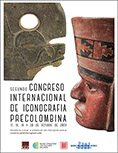Zea E-Books

Segundo congreso internacional de iconografía precolombina. Barcelona, 2023. Actas.
Date of this Version
2023
Document Type
Article
Citation
Publicado en Segundo congreso internacional de iconografía precolombina, 2023. Actas. Victòria Solanilla Demestre, editora. Lincoln, Nebraska: Zea Books, 2024. doi: 10.32873/unl.dc.zea.1716
Abstract
Este artículo rastrea los antecedentes históricos de ciertos textiles andinos y su iconografía en los ritos de paso de los jóvenes durante la pubertad. Estos antecedentes arrojan luces sobre los significados más amplios de las composiciones textiles y el uso del color, sobre todo el rojo y el azul oscuro, en algunas prendas masculinas y femeninas clave. También destaca el significado complementario de estas prendas para cada grupo sexual. Estos significados se centran en la manera en que tejer para las mujeres es en esencia un ejercicio autobiográfico en el que ellas inscriben su propia identidad en diferentes etapas de su vida, al experimentar las equivalencias entre sus propios flujos de sangre y otros flujos líquidos generativos de su entorno. Exploro este tema al yuxtaponer datos etnográficos de Mesoamérica, las tierras bajas amazónicas y los Andes.
This paper traces the historical background of certain Andean textiles and their iconography in the rites of passage of young men and women at puberty. This background sheds light on the wider meanings of textile compositions and colour use, above all that of red and dark blue, in some key male and female garments. It also highlights the complementary significance of these garments for each sex group. These meanings are centred in the way in which weaving for women is in essence an autobiographic exercise, in which they inscribe their own identity at different stages of their lifespan, by experiencing the equivalencies between their own blood flow and that of other generative flows of liquids in their environment. I explore this theme by juxtaposing ethnographic data from Mesoamerica, the Amazonian lowlands and the Andes.


Comments
Copyright © 2023 Denise Y. Arnold.